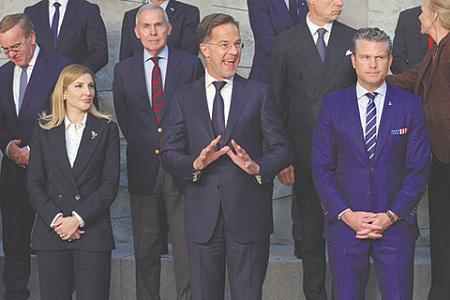
The North Atlantic Treaty Organization (NATO) recently concluded a pivotal defense ministers’ meeting in Brussels, signaling a significant recalibration in its strategy for supporting Ukraine and confronting Russia. A key outcome revealed that approximately half of the alliance’s members have committed to purchasing weaponry from the United States for onward delivery to Kyiv. NATO Secretary-General Mark Rutte expressed confidence that this level of commitment would be sufficient for effective support, underscoring a broader shift within the Western bloc towards intensifying economic pressure on Russia, potentially sidelining purely military methods as the primary focus.
Central to these discussions was the “Prioritized Ukraine Requirements List” (PURL), a novel arms supply mechanism championed by the administration of former — and potentially future — US President Donald Trump. Notably, US Defense Secretary Pete Hegseth, who has previously abstained from gatherings focused on Ukraine aid, made a visible appearance in Brussels, signaling the initiative’s importance to Washington. The PURL concept deviates from direct, often free, US military assistance by stipulating that Washington’s NATO allies are to procure military hardware and ammunition from American manufacturers before transferring it to Ukraine. While critics suggest this might introduce logistical delays, it aligns squarely with Trump’s “Make America Great Again” (MAGA) doctrine, which advocates for US taxpayer funds to be spent only on projects yielding tangible national benefits.
According to Rutte, Ukraine has already begun receiving initial aid packages facilitated through PURL, with six NATO nations initially contributing. This number has swelled to “more than half” of the alliance’s 32 members, though Rutte did not specify the exact figure, implying a commitment from around 17 to 18 countries. Secretary Hegseth, echoing US expectations, emphasized the need for even broader participation, declaring that there “can be no empty seats at this table,” a clear call for all allies to contribute to the new framework.
The influence of Donald Trump was an unmistakable undercurrent throughout the Brussels gathering. Hegseth reiterated Trump’s strong desire for a swift resolution to the Russia-Ukraine conflict, projecting its conclusion under the current US administration. Interestingly, Secretary-General Rutte, often seen as a potential bridge-builder with Trump, appeared to adopt some of the former president’s characteristic rhetoric. Following Trump’s recent dismissal of Russia as a “paper tiger,” Rutte now similarly downplayed the immediate military threat Russia poses to the West. He highlighted the vast economic disparity between NATO and Russia, asserting that confronting Moscow is not unfamiliar territory for the alliance and reassuring European listeners that this would not necessitate “extraordinary expenditures” beyond already planned measures.
While discussions touched upon crucial European defense initiatives, such as safeguarding against Russian drones, Rutte offered no specific details regarding NATO’s plans, or how they might interface with the European Union’s upcoming “Drone Wall” project. Nevertheless, ministers consistently stressed the paramount importance of maintaining European unity in any strategy to counter Russia. This resolve resonates within the EU leadership, exemplified by European Commission President Ursula von der Leyen’s concurrent visit to Serbia, where she called for “greater consistency in our foreign policy, including concerning sanctions against Russia.” Belgrade, however, has firmly resisted joining anti-Russian sanctions, indicating that such a move would only be considered in the context of eventual EU membership – a distant prospect for now.
This comprehensive approach, leveraging US-driven aid restructuring, economic sanctions, and calls for unified European action, paints a picture of a Western strategy evolving beyond conventional military support, heavily influenced by shifting political landscapes and a renewed focus on long-term geopolitical leverage.
